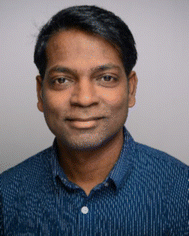Perovskites: from materials science to devices
Małgorzata
Kot
 *a,
Chittaranjan
Das
*a,
Chittaranjan
Das
 bc,
Clara Patricia Aranda
Alonso
bc,
Clara Patricia Aranda
Alonso
 d and
Daniel
Prochowicz
d and
Daniel
Prochowicz
 e
e
aApplied Physics and Semiconductor Spectroscopy, Brandenburg University of Technology Cottbus-Senftenberg, Konrad-Zuse-Straße 1, 03046 Cottbus, Germany. E-mail: sowinska@b-tu.de
bInstitute for Photovoltaics (ipv), University of Stuttgart, Pfaffenwaldring 47, 70569 Stuttgart, Germany
cHelmholtz Young Investigator Group, IEK5-Photovoltaik, Forschungszentrum Jülich, 52425 Jülich, Germany
dCenter for Nanoscience and Sustainable Technologies (CNATS), Department of Physical, Chemical and Natural Systems, Universidad Pablo de Olavide, 41013 Seville, Spain
eInstitute of Physical Chemistry, Polish Academy of Sciences, Kasprzaka 44/52, Warsaw, 01-224, Poland
 Małgorzata Kot |
 Chittaranjan Das |
 Clara Patricia Aranda Alonso |
 Daniel Prochowicz |
The name perovskite is applied to the class of compounds which have the same type of crystal structure as CaTiO3, discovered in Ural mountains in 1839 by Gustav Rose. The ABX3 perovskite structure can accommodate a wide variety of different cations and anions. Depending on the chemical composition, it can exhibit extremely different properties such like colossal magnetoresistance, ferroelectricity, superconductivity, light absorption, charge ordering, spin dependent transport and high thermopower, to name but a few. Thanks to this, a variety of different devices can be constructed using this crystal structure.
This themed collection includes outstanding contributions to cutting-edge innovations in the development of organic, inorganic, and hybrid perovskite materials and devices with the focus on potential applications in solar cells, sensors, scintillators and photodetectors. Topics ranging from basic research on new perovskite materials up to their application in everyday devices can be found.
For example, Li et al., have shown in a review article (https://doi.org/10.1039/D3TC04505F) how perovskite-based nanomaterials may improve smartphone-based sensors and thus make health diagnostics more accessible, which may lead to much faster disease diagnoses than the conventional physical exams of many patients. This review focuses on a detailed overview of the perovskite applications in different smartphone sensing areas.
Another interesting application of perovskite-based materials is shown in the work of Huang et al. (https://doi.org/10.1039/D4TC00508B). The authors incorporated MAPbBr3 quantum dots (MQDs) into cellulose nanofiber frameworks via adopting an oleic acid/oleyl amine-free approach to synthesize MQD papers. They have found that the abundant long-chain binding ligands containing sulphate terminal groups within the cellulose nanofiber remarkably stabilize the MQD structure, and thus enable the fabrication of self-powered and flexible MQD paper-based photodetectors with an excellent bendability and reliability. Moreover, these MQDs/cellulose-based photodetectors have a high environmental stability and are simple to dispose.
It is known that the lead-free perovskites can change their lattice arrangement with changing synthesis conditions. This effect is often described as dimensionality modulation. It can, in particular, be exploited to develop new materials with better optical properties than their three-dimensional counterparts. In this themed collection, Boix et al. (https://doi.org/10.1039/D4TC00623B) reported an influence of the hot-injection synthesis of 2-thiopheneethylammonium (TEA+) on the properties of tin halide perovskite microcrystals. They reported that a change in the TEA concentration in TEA-based tin bromide perovskite microcrystals may lead to the formation of highly luminescent 0D and low-emissive 2D microplates. Actually, the 0D-TEA4SnBr6 perovskite shows the highest photoluminescence quantum yield from the low dimensional TEA tin halide family, which is attractive for photonic and optoelectronic applications.
In recent years, the crystal structure of perovskite has been most often studied for its use in the production of new emerging perovskite solar cells. This is evidenced by several thousand scientific articles published each year on this topic. Our themed collection includes several articles presenting the latest research on this topic as well.
These are just a few examples of the many interesting papers in this themed collection published by Journal of Materials Chemistry C on perovskite materials and devices. We hope that all readers find them an exciting read. Finally, we would like to thank all contributing authors, reviewers, as well as the Editorial staff at the Royal Society of Chemistry for their invaluable contributions in achieving the goal of this themed collection.
Acknowledgements
M. K. acknowledges funding from the Zentrales Innovationsprogramm Mittelstand (ZIM), Federal Ministry of Economics and Climate Protection under project number KK5087602BR1.| This journal is © The Royal Society of Chemistry 2024 |
